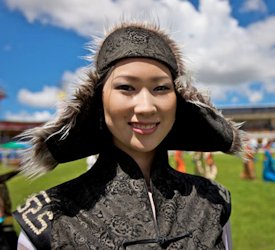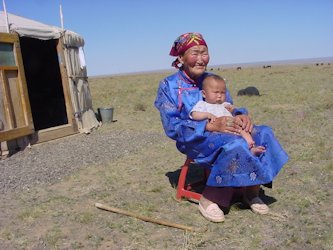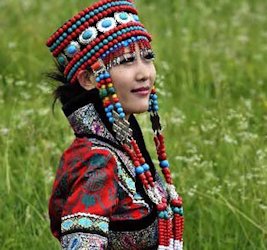|
33. Chinese Nationalities (Mongolian Minority) -- Minorities by Alphabetic Sequence |
||||

|

|

|
||
| Mongolian Lady | Mongolian Lady and Child | Mongolian Lady | ||
|
Mongolian Nationality The Mongolian Hordes of Genghis Khan and his successors swept as far as Vienna in the 14th century. Probably less than 10 percent of Inner Mongolia's people are Mongolian today, but their population is increasing. Livestock, coal, iron, salt, steel, and grain are economically important, yet many Mongols remain semi nomadic. They follow their flocks in summer, covering great distances and living in tents called yurts. Their yearly Nadam Fair features stock sales and contests of horsemanship, wrestling, shooting, and archery. The Mongolians are found in Gansu, Qinghai Provinces and the Xinjiang and Nei Mongol Autonomous Regions. They also can be found in Liaoning, Jilin, Heilongjiang, Hebei and Henan Provinces. The Mongolian language belongs to the Altaic family; there are many mutually understandable dialects. The Mongolian script, still is use today, dates from the early thirteenth century. The main religion is Lama Buddhism. They are part of the Altaic Mongol ethno linguistic group. There are over 6,200 Mongolian in Yunnan Province in a compact group by the beautiful Jiluhu Lake. They are the descendants of the Mongolian horsemen left after Kublai Khan's conquest of Yunnan. The Mongolians in Yunnan are good at farming and fishing as well as civil construction. Their language is somewhat similar to that of the Mongolians of North China. In Yunnan the Mongolians do not live in the "Menggubao" tent used in Inner Mongolia, instead they live in houses. |
||||
| Return to Alphabetic List On to No. 34 Minority Mulao ⇨ | ||||